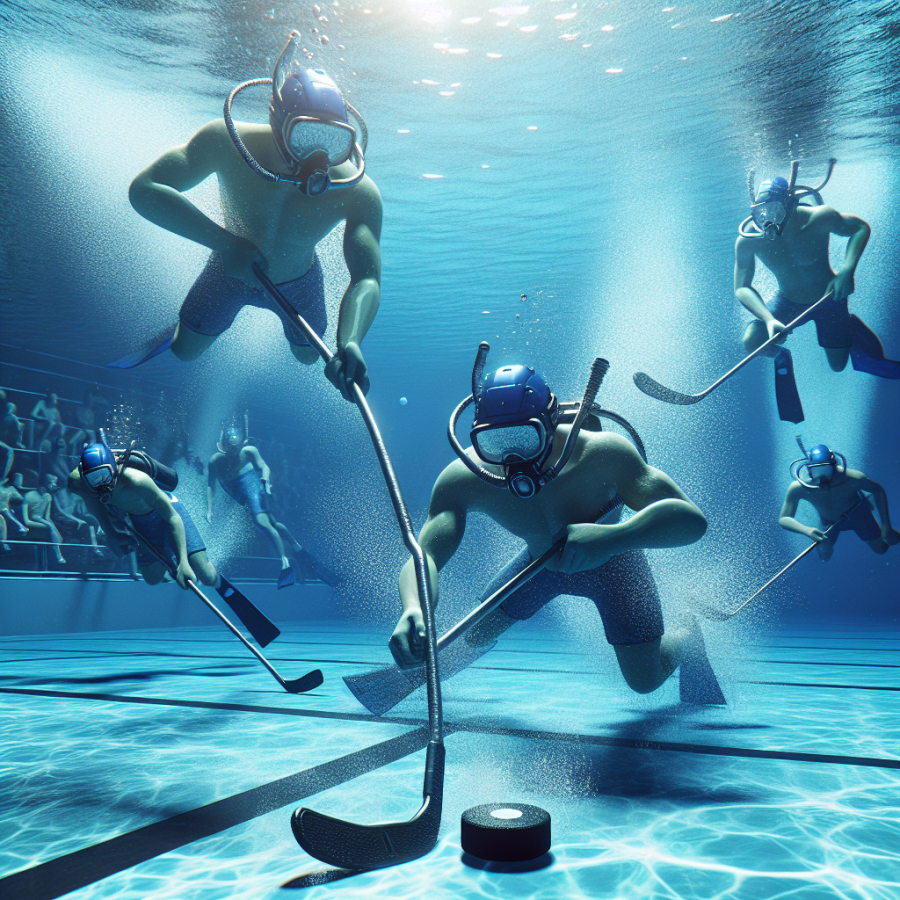The Adrenaline Rush of the Aquatic Pitch: Techniques and Strategies in Underwater Hockey
Underwater hockey, also known as Octopush, is a challenging and exhilarating sport that combines the aquatic environment's buoyancy with the adrenaline-pumping thrill of competition. Players equipped with masks, fins, snorkels, and a short stick maneuver a puck across the pool's bottom towards the opposing team's goal. This demanding sport not only tests physical stamina and agility but also mental acuity and teamwork.
One of the critical techniques in underwater hockey is the art of puck handling. Players must be able to flick the puck with precise control to pass between teammates or to shoot on goal. Mastering the wrist flick for various distances is a fundamental skill. It requires a blend of finesse and strength, ensuring the puck glides smoothly along the pool floor without getting intercepted.
Effective swimming techniques are vital for any underwater hockey player. The sport requires quick bursts of speed and sustained propulsion to chase down the puck or to get into a strategic position. A player's ability to execute a swift and efficient dolphin kick can mean the difference between scoring a point or losing possession. Good swimmers use their entire body, engaging core muscles to maintain speed without exhausting their oxygen supply.
Breath control and management is perhaps one of the most critical aspects of underwater hockey. Players develop the ability to hold their breath for extended periods while exerting themselves through rigorous activities. Learning to time breaths between plays, as well as the ability to recover quickly on the surface, are pivotal to maintaining endurance throughout the match.
Another essential strategy in underwater hockey is spatial awareness. The ability to read the game, anticipate opponents' movements, and understand positioning contributes greatly to a team's success. Players must constantly be aware of their surroundings, tracking both the puck and players from both teams to make informed decisions.
Teamwork and communication in underwater hockey are unique due to the lack of verbal cues. Players often use hand signals on the surface before submerging to coordinate their strategies. Underwater, much of the communication is non-verbal, including reading the body language and movements of teammates to predict their actions.
Defensive techniques are just as important as offensive strategies in underwater hockey. Protecting the goal requires a solid defense line that can adapt to the fluidity of the game. Players must master the skill to block shots, intercept passes, and clear the puck from dangerous areas. Physical fitness, combined with quick reflexes, enables defenders to sustain a robust barrier against the attacking team.
Read also:
Embracing the Joy of English Riding: A Guide to Pleasure
Navigating the Underwater Arena: An Introduction to the Sport of Underwater Hockey
Underwater hockey, often referred to as Octopush, is a globally-recognized sport that combines the basic principles of hockey with the unique environment of being beneath the surface of the water. The sport was first invented in 1954 by Alan Blake in England and has since spread across the world, captivating players and audiences with its distinctive style of play and the adeptness required to master the game.
The game is played at the bottom of a swimming pool by two teams, each striving to maneuver a puck across the pool floor into the opposing team's goal using a short stick, known as a pusher or stick. The puck is weighted to ensure it sinks to the bottom, and the goals are heavy metal trays situated at opposite ends of the playing area.
One key aspect of underwater hockey is the equipment used. Players are equipped with fins, a mask, snorkel, and a protective glove. The fins augment players’ propulsion and agility in the water, while the mask allows for clear vision, and the snorkel enables players to stay submerged as they execute strategic plays. The protective glove, usually worn on the stick-hand, serves to guard the fingers against impact with the puck or pool bottom. Additionally, protective headgear with ear guards is worn to prevent injuries that can occur from contact with other players or the puck.
Apart from physical equipment, mastering underwater hockey requires adept breath-holding capabilities. Players must meticulously coordinate their dives and surface intervals, striking a balance between exertion beneath the water and recovery at the surface. Prolonged breath-hold skills are a cornerstone of competitive advantage, allowing players to execute strategic moves and defend against opponents for extended periods.
The sport demands a blend of physical prowess and mental acuity. Players must have exceptional spatial awareness to navigate the three-dimensional playing field and must remain vigilant to the movements of both teammates and rivals. Strategy plays a crucial role in underwater hockey; teams often strategize about formations and plays in much the same way as in terrestrial team sports. This tactical element makes underwater hockey not only a test of individual athleticism but also of cohesive team play.
To ensure fairness and safety, underwater hockey is overseen by referees who monitor the game from above the surface, watching for fouls or unsafe play. Infractions such as obstruction, stick infringement, or improper use of equipment result in advantages being awarded to the opposing team and, in certain cases, penalties.




